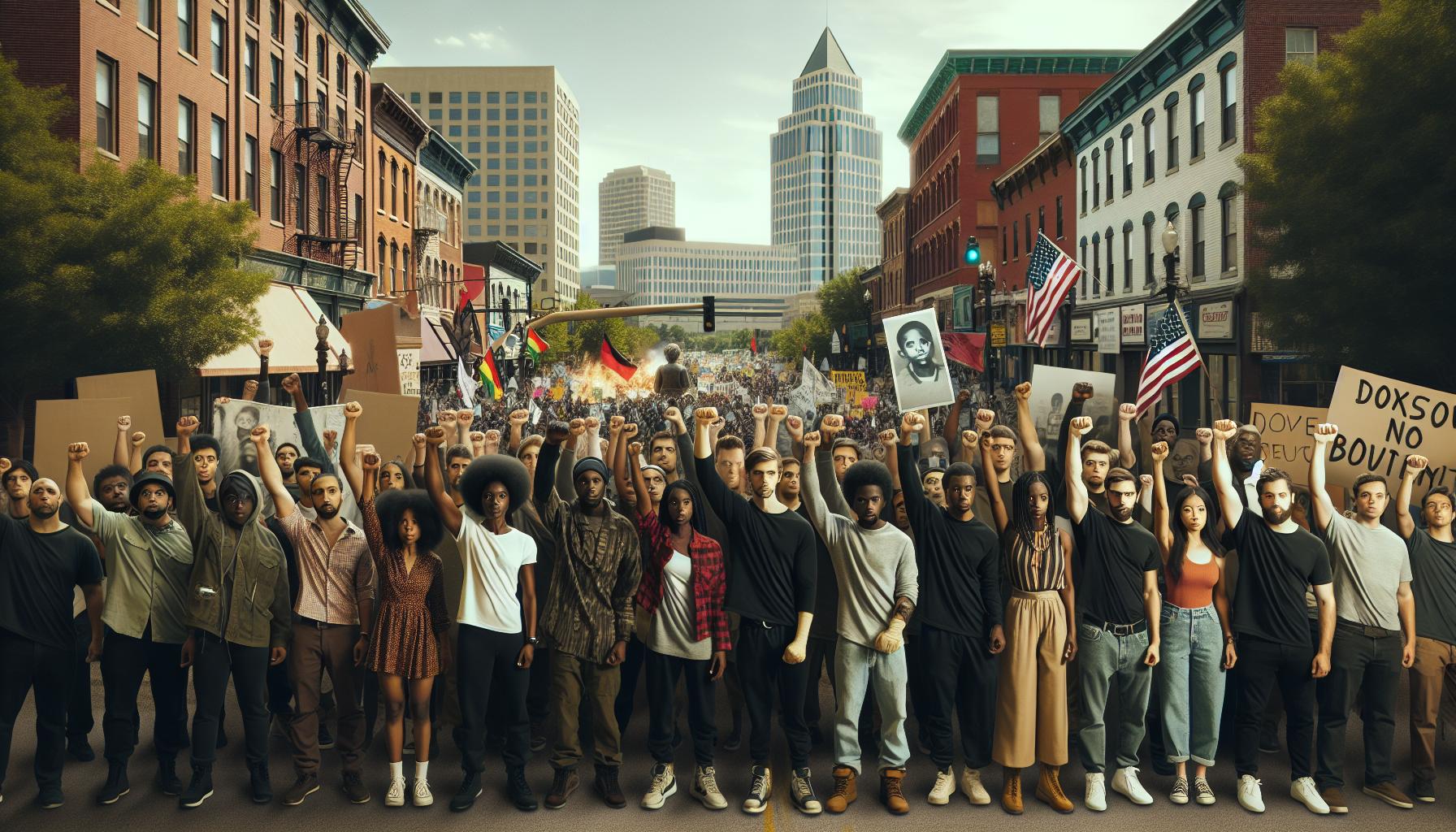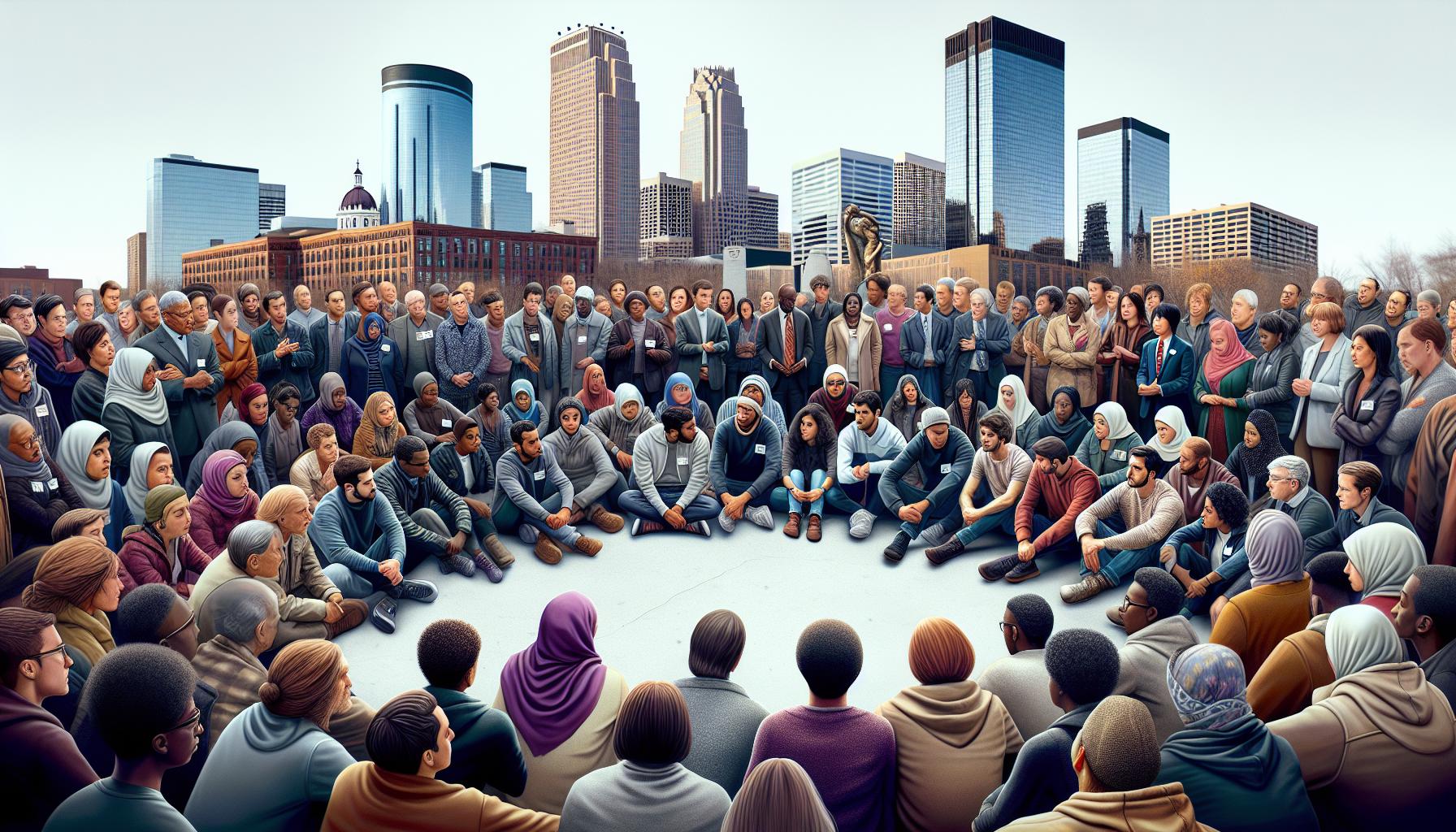In the heart of the Midwest, Minneapolis has always been known for its vibrant culture and stunning lakes. But a storm brewed in 2020 that turned this city into a focal point for social change and turmoil. The documentary “The Fall of Minneapolis” on Netflix dives deep into the events that shook the nation, revealing the raw emotions and complexities behind the headlines. With a mix of gripping storytelling and thought-provoking insights, this film doesn’t just recount history; it challenges viewers to reflect on their own perspectives. Whether you’re a documentary aficionado or just someone searching for a compelling watch, this film promises to keep you glued to the screen. So grab your popcorn and prepare for a journey that’s as enlightening as it is entertaining.
The Fall of Minneapolis Documentary Netflix
“The Fall of Minneapolis” documentary on Netflix examines pivotal moments in Minneapolis during 2020. Events surrounding the killing of George Floyd served as the catalyst for national protests and discussions on systemic racism. It captures the raw emotions and palpable tension within the city, providing an unfiltered look at the reactions of its residents.
Filmmakers utilize interviews with activists, community leaders, and everyday citizens to weave together diverse experiences. Each narrative contributes to a broader understanding of the challenges faced by marginalized communities. The documentary integrates powerful visuals, showing both the beauty of Minneapolis and the pain stemming from civil unrest.
Documentary enthusiasts appreciate the film’s ability to blend storytelling with critical analysis. Through its educational approach, viewers gain insight into social issues affecting not just Minneapolis but also cities across the United States. The film evokes deep reflections on societal values, personal beliefs, and the potential for change.
By presenting factual accounts and real-time footage, the documentary emphasizes authenticity. Historical context enriches the storytelling, ensuring that audiences grasp the significance of the events portrayed. Such narratives engage casual viewers while prompting critical discussions among those familiar with the subject matter.
In essence, “The Fall of Minneapolis” stands as a poignant reminder of the ongoing struggle for justice and equality. Its influence extends beyond entertainment, inviting viewers to join the conversation on social change and community resilience. Audiences seeking impactful content find this documentary both enlightening and compelling.
Key Themes Explored

“The Fall of Minneapolis” dives deep into critical themes that resonate with audiences nationwide. It presents a raw examination of racial dynamics within the city.
Racial Injustice
Racial injustice lies at the core of the documentary’s narrative. The events following George Floyd’s killing showcase systemic racism ingrained in societal structures. Activists, community leaders, and everyday residents share their stories, revealing the deep-seated issues that marginalized communities face. Perspectives from those directly impacted highlight a pervasive sense of injustice and the urgency of dialogue. The film emphasizes the need for accountability and transformation within institutions. Through powerful interviews and real footage, it illustrates how deeply entrenched beliefs can perpetuate inequality. Constant reminders of historical injustices push viewers to reflect on the current state of race relations in the United States.
Community Impact
The documentary underscores the profound impact on the Minneapolis community following the protests. Grassroots movements and collective activism emerge as central elements in navigating the aftermath. Residents respond to chaos with solidarity, organizing efforts to uplift marginalized voices. The film captures spontaneous community gatherings that promote healing and understanding. Local businesses and organizations rally together, demonstrating resilience amidst destruction. Direct testimonies from residents reveal a shared commitment to change and justice. This emphasis on communal response highlights the interconnectedness of struggles faced by many communities beyond Minneapolis. Conversations sparked by these events encourage broader discussions on reform and collective action across the nation.
Notable Interviews and Perspectives

The documentary “The Fall of Minneapolis” features compelling interviews that provide insight into the community’s response to recent events.
Voices from the Community
Activists share powerful narratives that reflect their lived experiences. Conversations reveal the emotional weight of loss and the urgency for change. Residents discuss the aftermath of George Floyd’s murder, highlighting a collective sense of grief and hope for a better future. Many emphasize the importance of unity in addressing systemic issues. Their stories showcase resilience as they work toward healing and rebuilding. This section of the film vividly captures a community determined to amplify marginalized voices and promote solidarity amidst chaos.
Experts’ Insights
Scholars and activists lend their perspectives, informing viewers about systemic racism’s roots. Key points relate to historical injustices that persist in current societal structures. Experts highlight the impact of policy decisions on marginalized communities, citing data to support their claims. Insights reveal the necessity for transformative change within institutions to create equitable systems. The documentary allows these voices to challenge viewers to engage critically with social issues beyond Minneapolis. Trained professionals contribute a depth of understanding, enhancing the dialogue surrounding justice and equality.
Cinematic Techniques and Storytelling

The documentary employs distinct cinematic techniques to enhance its storytelling.
Visual Style
Its visual style captivates the audience through evocative imagery and dynamic cinematography. Intense shots of protests alongside serene landscapes of Minneapolis illustrate the city’s contrasting emotions. The use of close-up interviews with residents allows viewers to connect with their personal narratives deeply. Vivid colors emphasize the vibrancy of community gatherings while contrasting with muted tones during moments of unrest. Each frame contributes to the film’s emotional depth, forging an intimate connection between the audience and the subjects.
Narrative Structure
A nonlinear narrative structure unfolds in the documentary, weaving together various perspectives and timelines. It begins with the immediate aftermath of George Floyd’s murder, immediately planting viewers into the heart of turmoil. Flashbacks to community history offer context, showcasing Minneapolis’s diverse cultural landscape. Sequential storytelling balances personal experiences with broader societal themes, creating a rich tapestry of interrelated events. Each segment builds on the last, gradually revealing the complexities of systemic racism and community resilience, ensuring that every voice adds weight to the overarching narrative.
Audience Reception and Critique
The documentary “The Fall of Minneapolis” garnered significant attention, leading to varied responses from its audience. Its exploration of critical social issues resonates deeply with viewers.
Critical Acclaim
Critics praised the documentary for its insightful analysis and emotional depth. Reviewers from reputable platforms highlighted its ability to balance storytelling with rigorous examination of systemic racism. Recognition came in the form of accolades from film festivals and positive ratings on popular review sites. Many acknowledged the film’s unique approach, blending artistic cinematography with powerful narratives. Critics noted that the documentary serves as a vital resource for understanding the complexities of racial injustice, making it a significant contribution to contemporary discussions around social reform.
Viewer Reactions
Viewer responses showcased a diverse range of emotions, from anger to hope. Audiences expressed appreciation for the documentary’s raw portrayal of community struggles. Many found the interviews with activists and residents particularly compelling, stating that they provided relatable perspectives on systemic issues. Comments on social media platforms highlighted the film’s impact, with viewers emphasizing the urgency for change and accountability. Discussions sparked by the film indicated that it prompts deeper reflection on individual roles within societal structures, encouraging grassroots movements across the nation. “The Fall of Minneapolis” stands as a vital exploration of the events that shaped a city and a nation. It captures the raw emotions and complex narratives surrounding George Floyd’s tragic death and the subsequent protests. The documentary not only highlights the urgent need for dialogue and accountability but also showcases the resilience of a community determined to foster change. Through powerful storytelling and stunning visuals, it invites viewers to reflect on systemic racism and the importance of solidarity. This film is more than just a historical account; it’s a call to action for everyone to engage in the ongoing fight for justice and equality. As discussions sparked by the documentary continue, it becomes clear that the journey toward understanding and reform is far from over.



